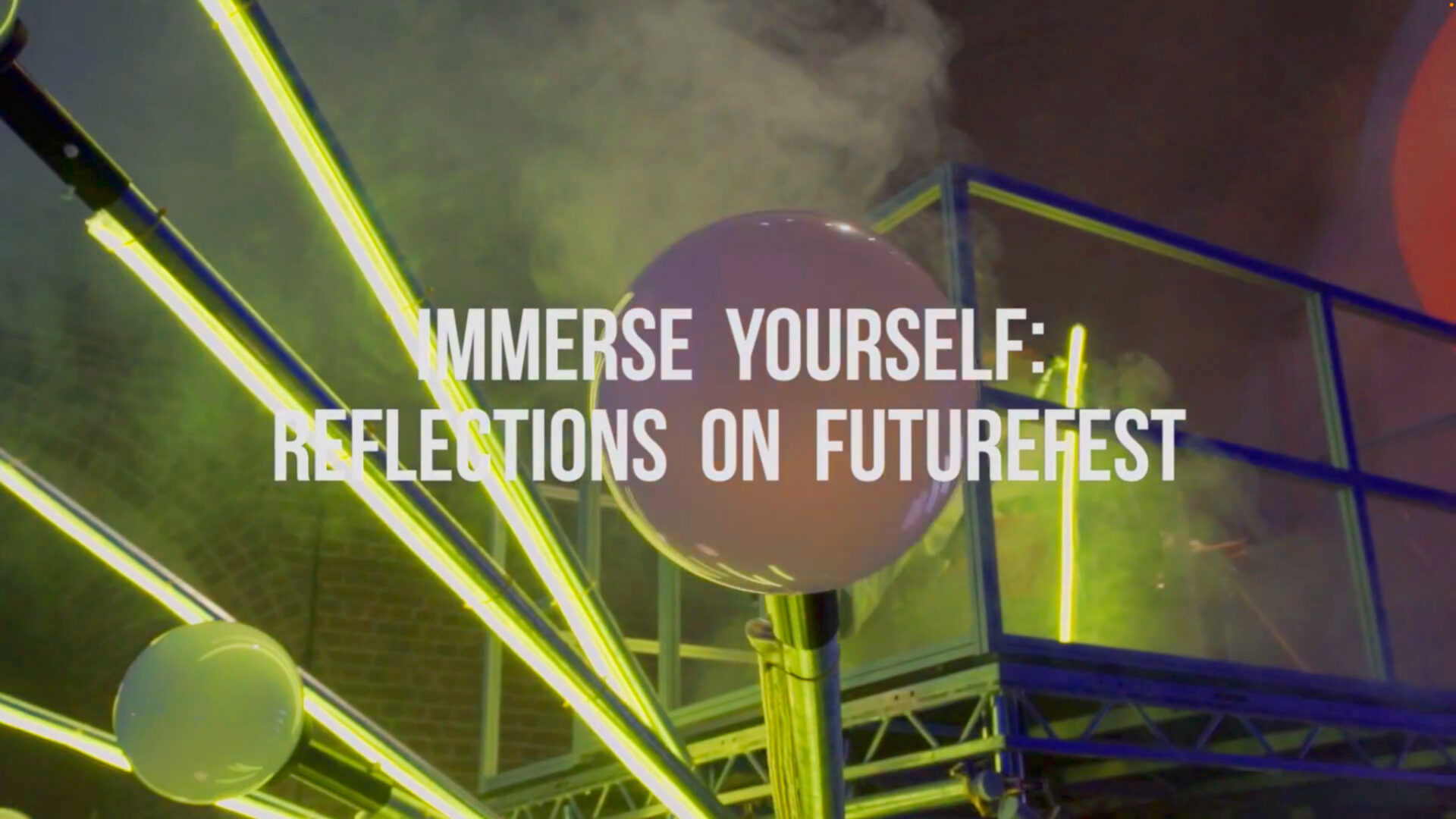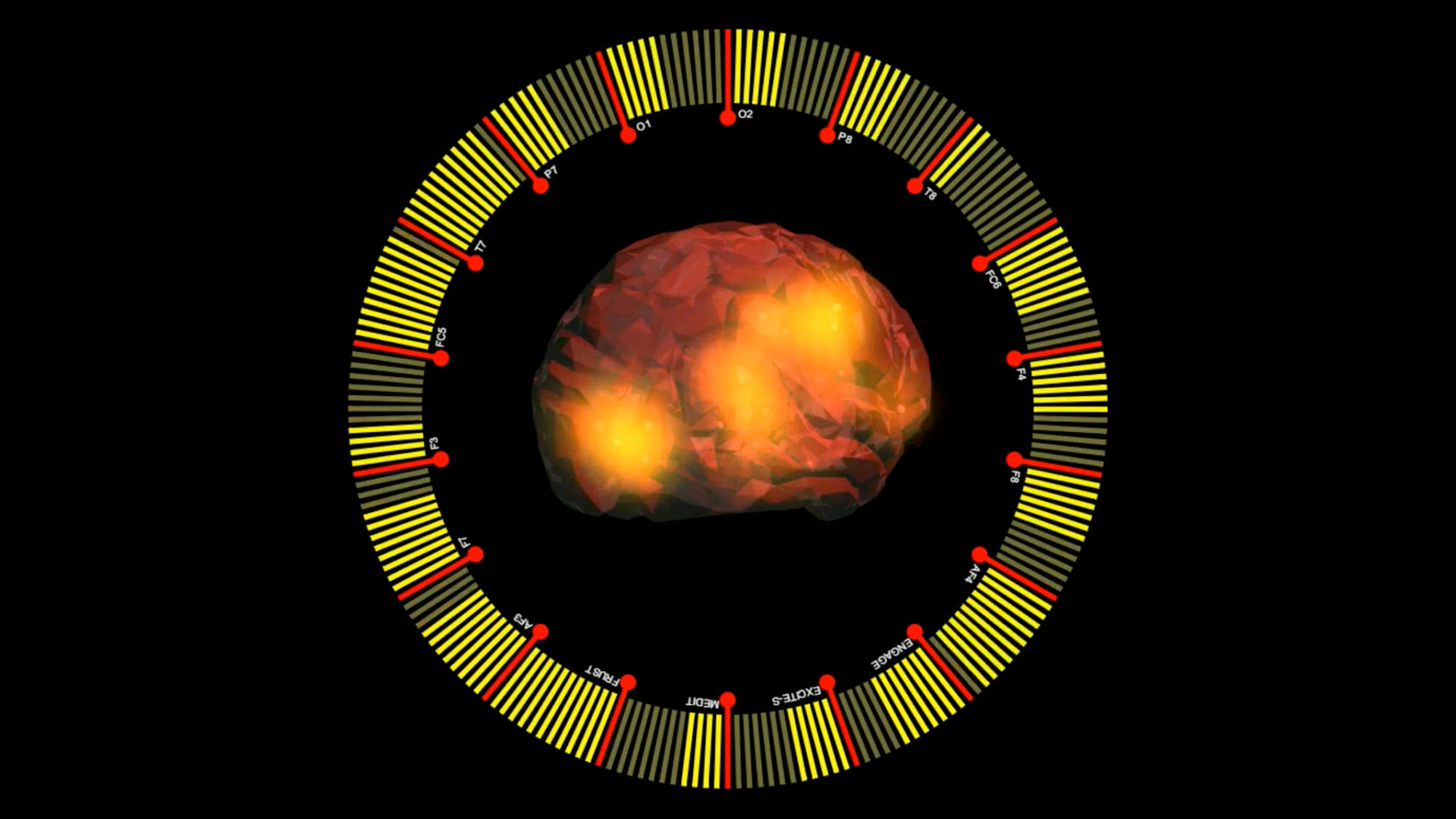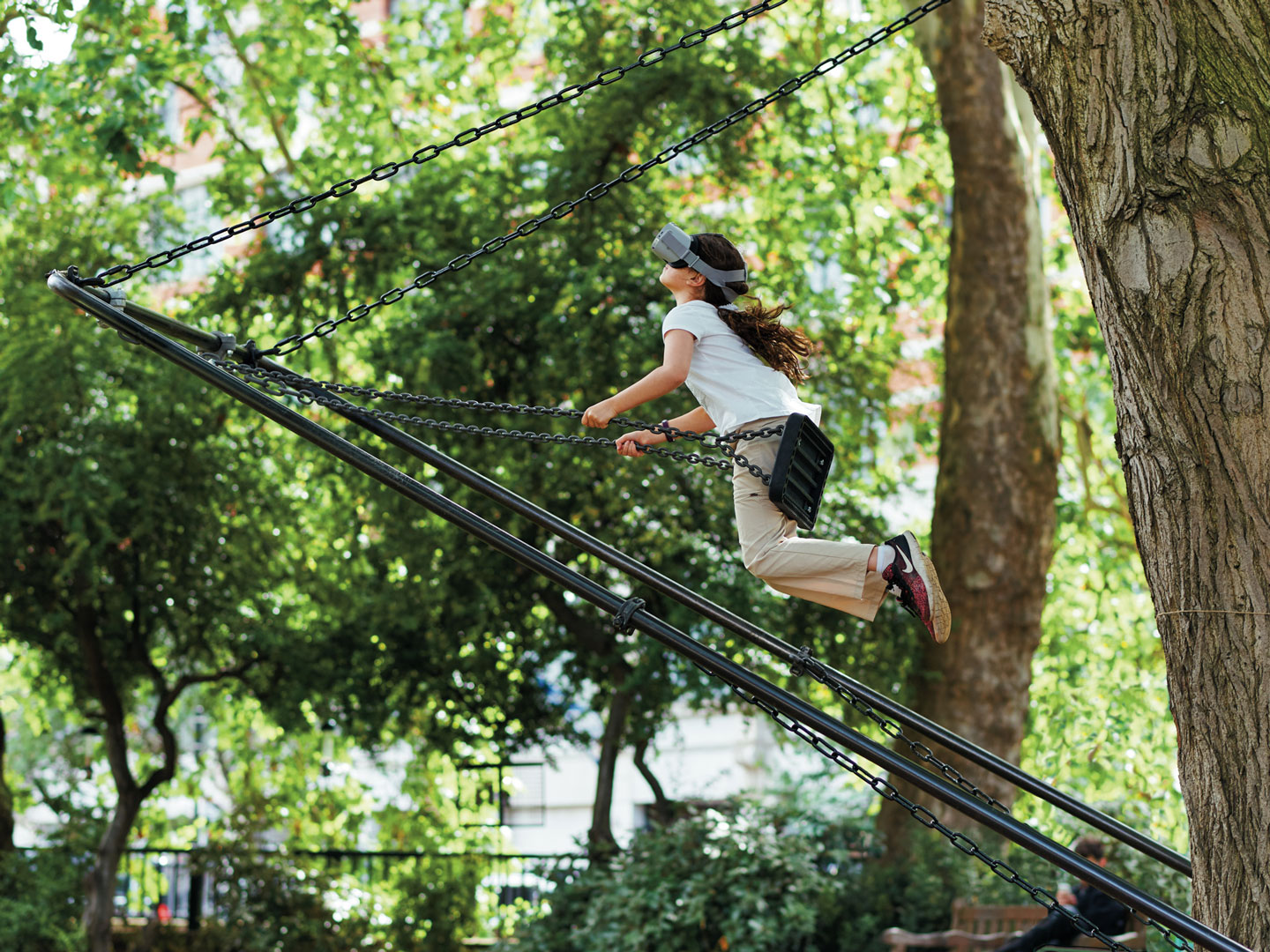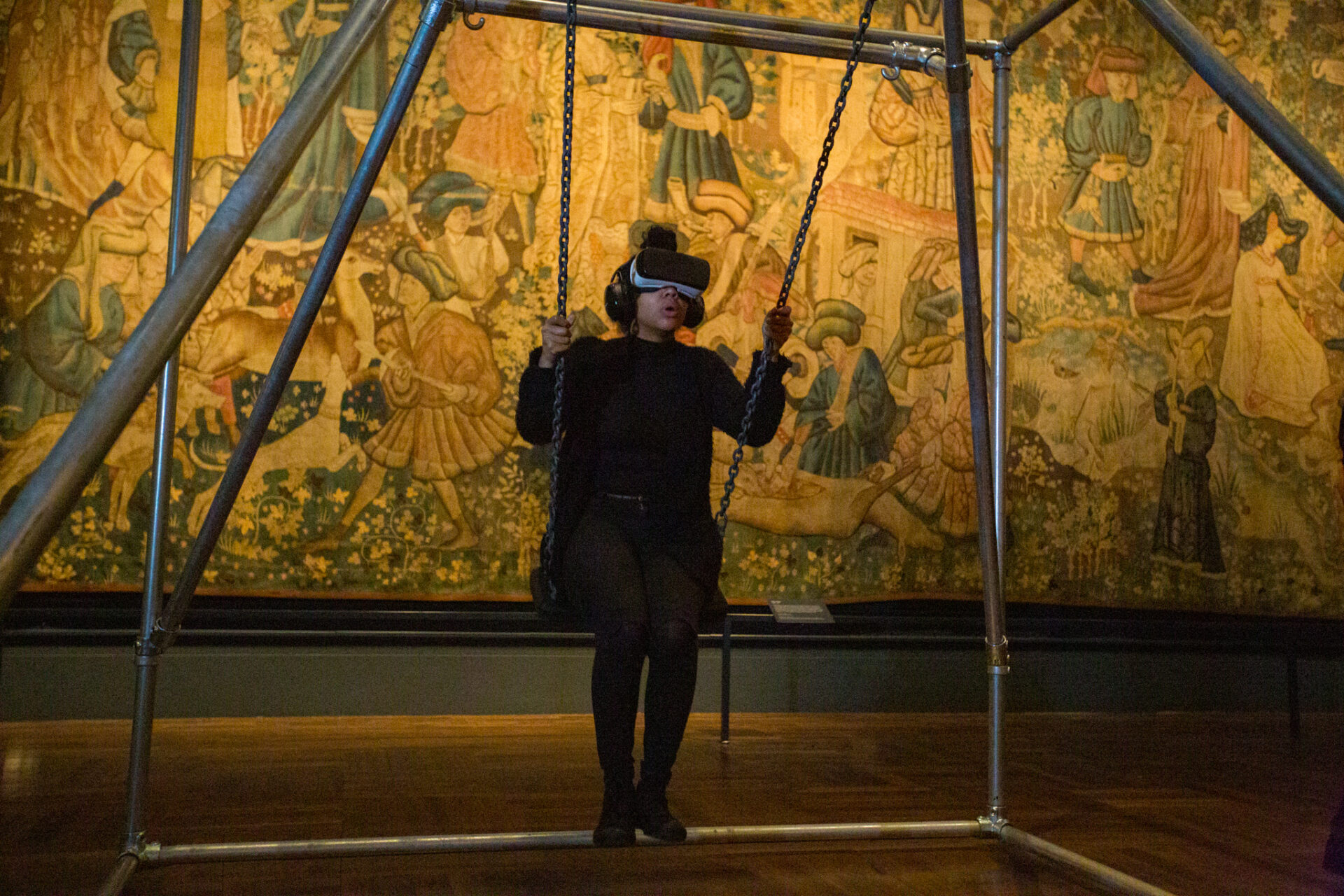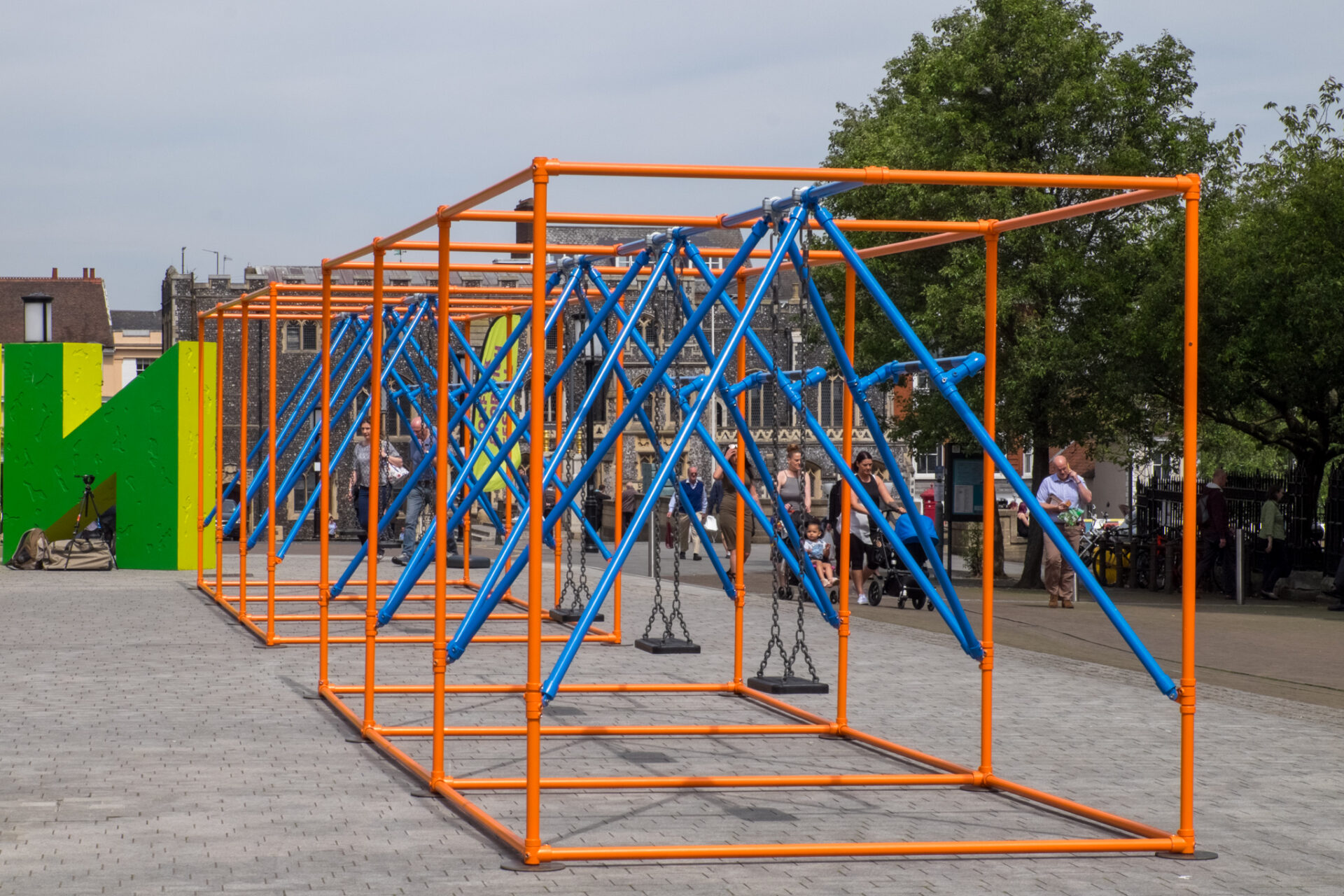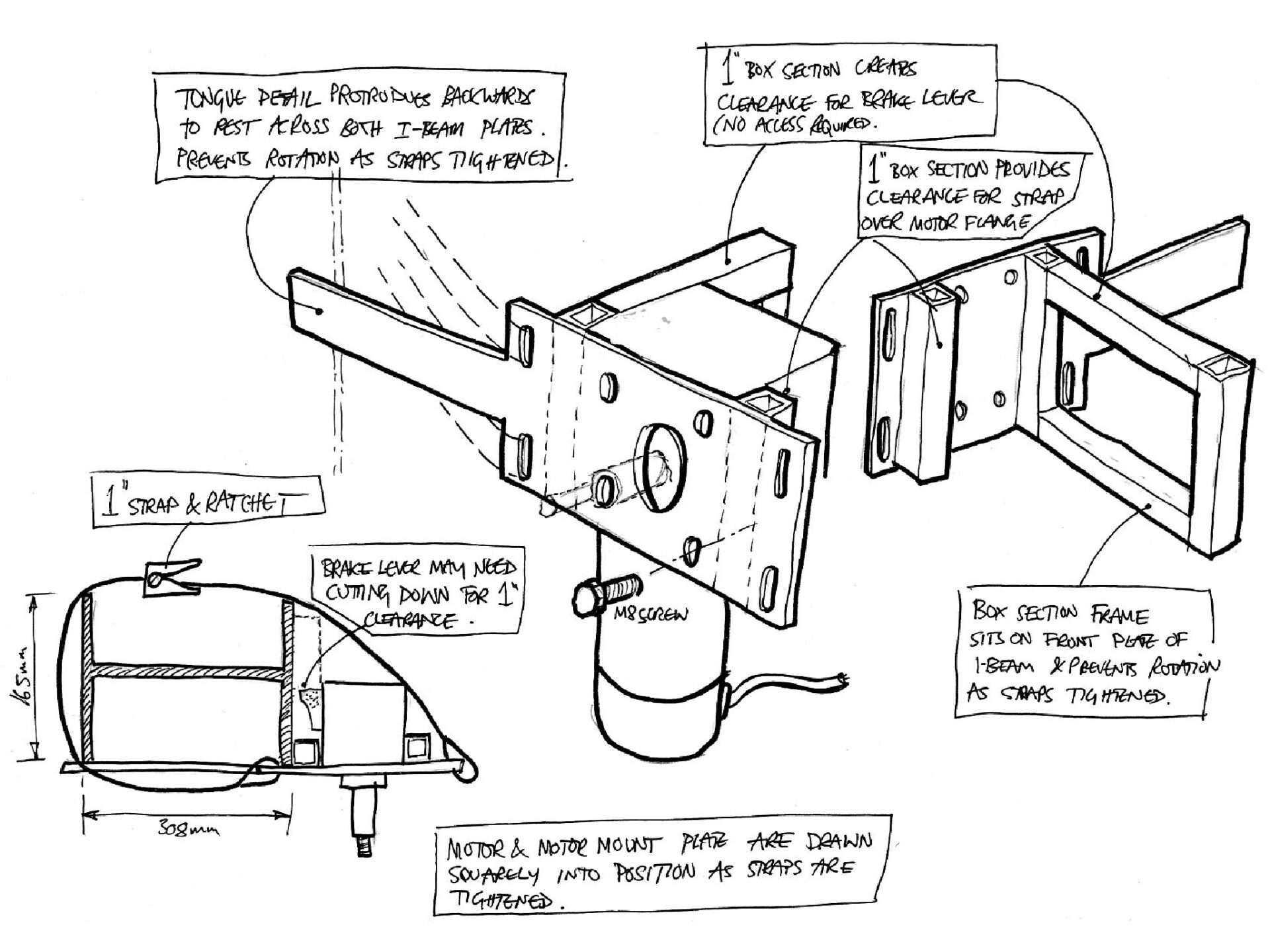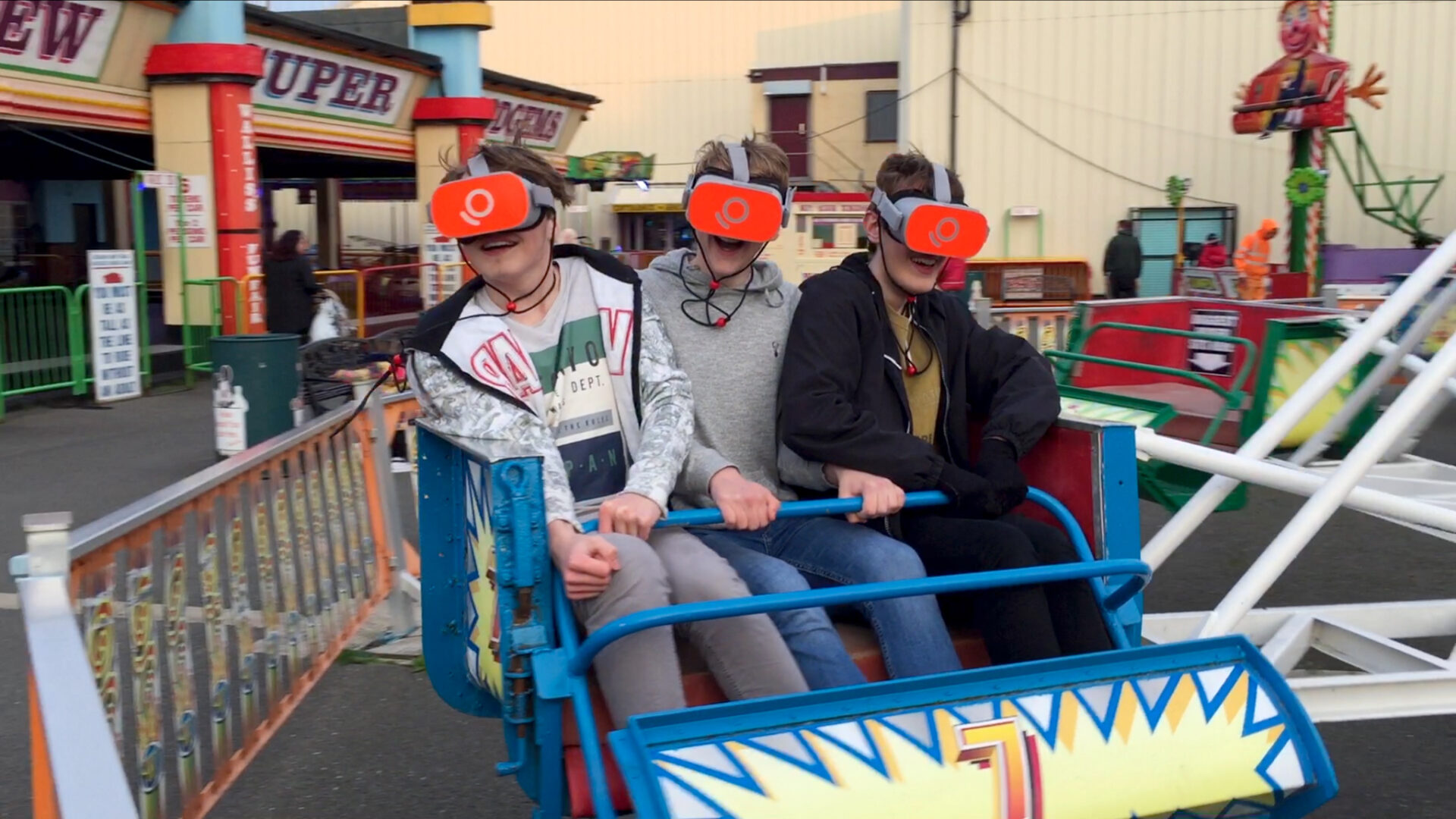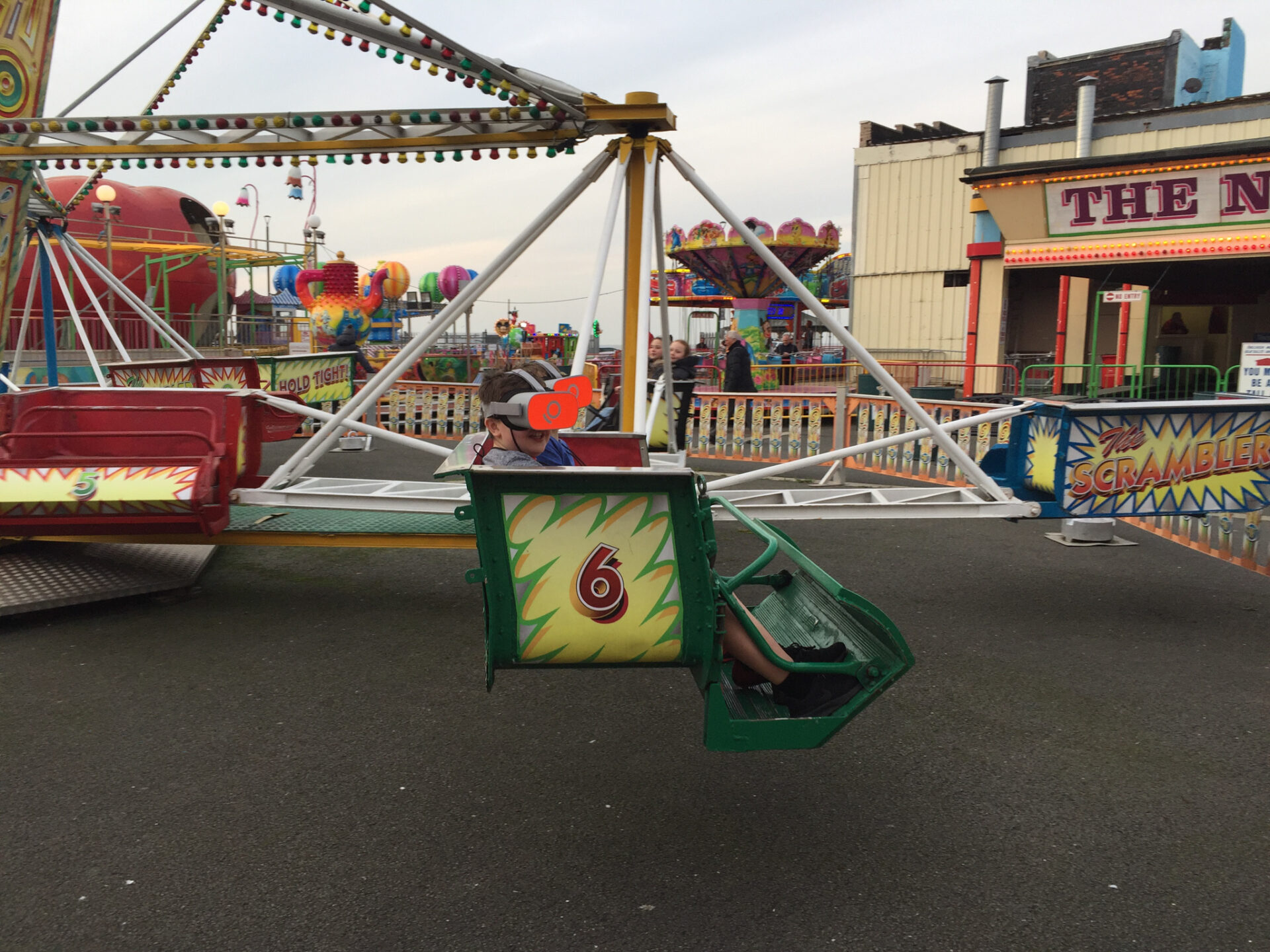Neurosis
2050. Fairgrounds are no longer restrained by corporeality. They have become a neurological playground designed to support cerebral fantasies, limited only by the imagination of their punters.
The fairground as a place for social, cultural, physical and emotional exploration remains intact, but white knuckle rides have been side lined as historic spectacles. The latest generation of riders doesn’t come to the fair to be seen experimenting with their bodies, but with their minds.
NEUROSIS is a ride born from critical design. It features a 6-degree of freedom motion simulator and VR headset to immerse the rider in a surreal virtual environment, controlled not by a ride operator, but by the rider’s own neurological feedback. However, their experience isn’t solely introspective; it is also a performance for other punters. Fairground lighting displays real-time neurological activity; the simulator mechanics undulate and sway; and the music pumps; all set against the backdrop of fairground artwork depicting futuristic neurological fantasies.
The rider’s neurofeedback is used to drive generative artwork in a virtual world. A ribbon track emerges, transporting our rider, twisting and twirling through a psychedelic landscape. The rider’s neurological patterns change in response to the music being heard, and the ride sensations they feel. But the rider has some control over their destiny by simply imagining – if they can – swooping left and right, up and down.
Volo
Take flight in one of four award-winning virtual da Vinci flying machines, celebrating Leonardo's 500th anniversary.
Flap and soar over cliffs as an Ornithopter bird-person; join a psychedelic aviator’s ballet in your Aerial Screw; shoot into satellite orbit from a renaissance cannon; or bank and weave in a Glider across extraterrestrial landscapes.
Volo features a unique tensioned swing structure, which is designed to be cantilevered from trees.
VR Twister
This classic fairground ride got a 21st century twist.
The twister is a spinning circles-within-circles flat ride. It whisks riders across the stage, between points on its outer perimeter. Riders alternate between moments of exhilarating high speed and getting squished in hand brake turns. You can now take a “Ride with VR” and things will start to get really freaky. You’ll leave the earth behind as you ascend into the heavens, where you’ll go zooming around an abstract candy-coloured world of epic proportions.
The design, installation and operation of Ride with VR have been produced to meet standards governed by the UK’s Amusement Device Inspection Procedures Scheme. “VR Twister” is Studio Go Go’s second virtual experience to be created for the Twister.
Bucking Bronco
Could you control a rider’s experience based purely on their physiological data?
Experiment No.1 features 3 bankers, each with different attitudes to thrill seeking and risk taking (this work was created the last financial crisis). Members of the audience are invited to choose a banker who they have to “please, scare, and then excite” by controlling the intensity and combination of buck and spin of their ride. But there is a catch, as the operator isn’t allowed to see the rider…
Adaptive Ride Experiment No.1 has been compared to the Milgram Experiment on many occasions, which has left some clients feeling a little uncomfortable.
Oscillations
Oscillations is based on two popular entertainment technologies: the multi millennia-old swing and the 21st century virtual reality headset - the former designed to excite the vestibular system, the latter designed to excite the visual cortex.
Headsets mask reality, and draw the rider into an insular world. The actions of swinging and looking are rewarded with uncanny, dynamic, vertiginous architectural landscapes that excite the senses. Riders’ haphazard shrieks of delight, and groans of discomfort suggest an illicit experience. Cubic sculptural forms reference the language of playground equipment. A queue of spectators grows.
VR Playground
Don a virtual reality headset, jump on a playground swing, and be transported on an exhilarating swing-powered adventure.
VR Playground is an experiential ride installation and aerial performance. Riders propel themselves through a series of colourful geometric virtual worlds, each driven by the action of swinging within a cubic structure. An array of fantastical virtual motions offers alternative realities to the real physical sensations of swinging, set within a unique architectural-scale virtual playground and soundscape, designed to excite a spirit of fun and visceral experimentation.
Riders inadvertently perform moments of wonder, awe and trepidation to spectators, many of whom are queuing for the ride themselves, curious to discover the secrets of these hidden worlds.
High Roller (rating “turbocharged”): scoot through the metropolis inside a mono-wheel. Shuttlecock (rating “bonkers”): leap tall structures in a single bound. Jellyfish (rating “eerie”): undulate upwards to escape the deep abyss. Walker (rating “feel-good”): from baby steps to giant strides, go strut your stuff.
Breathless
Text taken from publication ‘Uncomfortable Interactions’.
A ride inspired by Jean-Honore Fragonard’s painting The Swing, which reportedly depicts an erotic scene involving three people: a woman riding the swing, a voyeur in the bushes watching the woman’s exposed legs, and her fiancé controlling the swing via a pull rope.
Breathless, focuses on entertainment and sociality in the mainstream setting of an amusement park. At its heart is a novel interaction technology that is deliberately designed to create a new element of fear and discomfort into rides – a gas mask that is enhanced with respiration sensors and Wi-Fi so that visitors can interact with rides by breathing, requiring riders to simultaneously battle the ride and their own bodily response. Breathless extends this approach by embedding breath sensors into a gas mask which is used to drive a large powered swing. A selected respiration monitor transmitted breathing data to a ride control computer which in turn, actuated a rope swing, pulling it backwards when the rider inhaled and forwards on exhalation.
Due to the natural pendulum nature of the swing, this required a human to breathe in harmony with the swing’s resonant frequency to make the swing go higher. The swing length was chosen to resonate at a comfortable breathing rate of 12 breaths per minute. This core idea was embedded into an overall ride experience whose design was inspired by Jean-Honore Fragonard’s painting The Swing (1767) which reportedly depicts an erotic scene involving three people: a woman riding the swing, a voyeur in the bushes watching the woman’s exposed legs, and a bishop controlling the swing via a pull rope. This was mapped onto a ride structure in which each participant moved between three distinct roles: voyeur, rider, and controller.
On arrival, each participant joined a queue, to be fitted with a gas mask when they reached the front. They were then taken to a specific viewpoint where they became the voyeur, watching a floodlit rider swinging in front of them. Once the ride stopped, this rider dismounted and was taken to a seat next to the swing to become the controller. In turn, our voyeur was now led to the swing to become the new rider. At this point the floodlight was extinguished and the controller was now spot-lit from above while they initially controlled the swing, with the rider at their whim. After a while, control of the swing passed over to the rider, which would often involve a noticeably jerky moment of transition if their breathing was out of sync with its movements. After roughly two minutes, the ride stopped, the rider was moved to assume the role of the controller and our new voyeur became the next rider.
Oscillate
Oscillate is an immersive interactive artwork based on two popular entertainment technologies: the multi millennia-old rope swing and the 21st century Oculus Rift – the former designed to excite the vestibular system, the latter designed to excite the visual cortex. Oscillate was co-commissioned by Sheffield Doc/Fest and Crossover Lab and shown as part of VR Arcade at Site Gallery, Sheffield.
Oscillate is designed to exploit a sense of anxiety that can be created and amplified by mentally flipping between parallel activities of private experience and public performance. Each activity is experienced as the rider’s consciousness, and immersion, switches between virtual and real worlds. This fluctuation has both terrifying and thrilling effect.
A rider sits alone in a silent virtual digital facsimile of the gallery’s bustling real physical space. Once the rider starts swinging their trajectories in real and virtual worlds are initially matched. However, the rider’s virtual swing amplitude slowly begins to amplify, and the floor starts to drop away, sinusoidally in harmony with the swing (a reference to Irmin Roberts’ pioneering dolly zoom effect used by Hitchcock in Vertigo). Both illusions are designed to make the rider believe that they are swinging higher than they actually are.
Twisted Forest
A rider's brain is willing to do way more work than you might imagine - and you should let it.
We created Twisted Forest to expand and test the boundaries of different types of virtual motion that a rider might perceive to be real, and – more importantly – enjoyable. The original creative brief started as follows:
“The world is an amazon-like forest – thick and verdant. The forest is criss-crossed by straight man (or alien?) made canals that connect perfectly-circular ponds of water. The network from an aerial view looks like a printed circuit board – reminiscent of crop circles. The canals and ponds are bounded by concrete paths. These bodies of water are cut straight into the forest, just like crop circles into corn. The canals run at 0, 60, or 120 degrees”
“At the centre of each pond is a spinning structure with a central vertical telescopic spindle. At the top of the central spindle are hinged three equispaced articulated (JCB digger) arms that reach outward from the central spindle. There is a vertical outer spindle at the outermost tip of each arm. From each outer spindle a rotating cruciform structure is suspended. Two riders are suspended beneath each arm, at the four tips of the cruciform structure. The movements described are initially similar to the Twister ride. The arms of the cruciform structure telescope out and back, providing a first insight that this ride is not going to be usual…” And so it continues.







